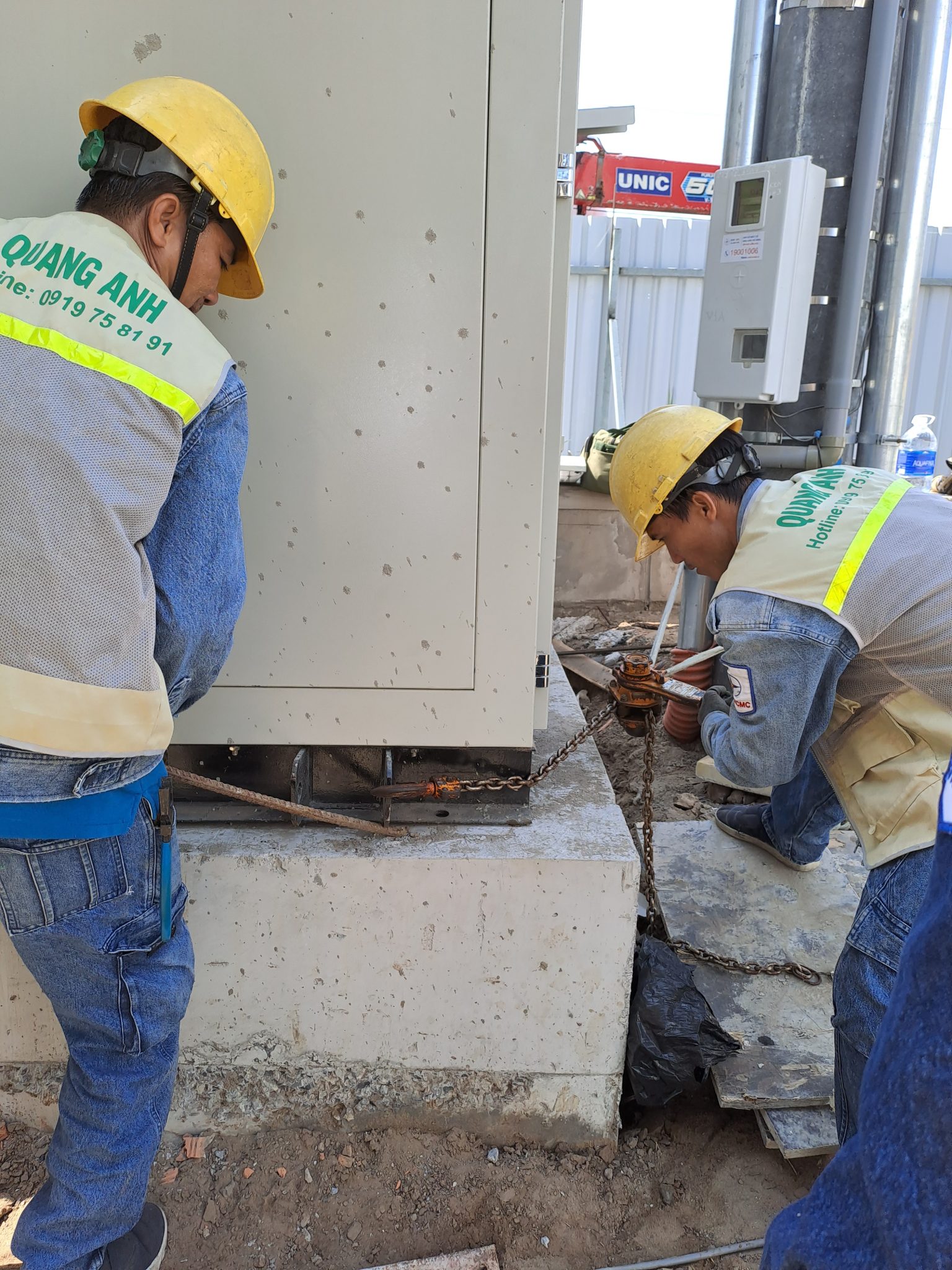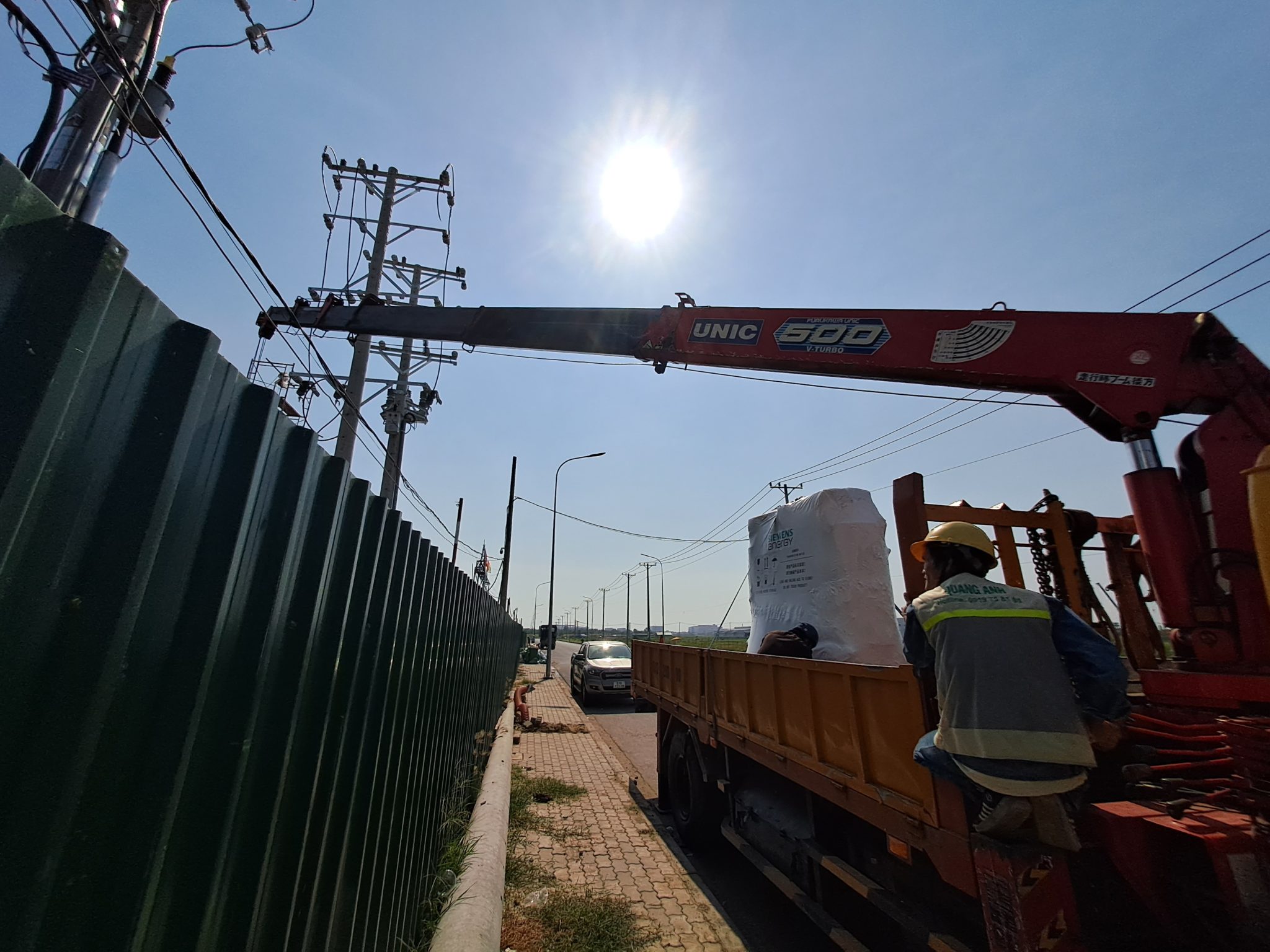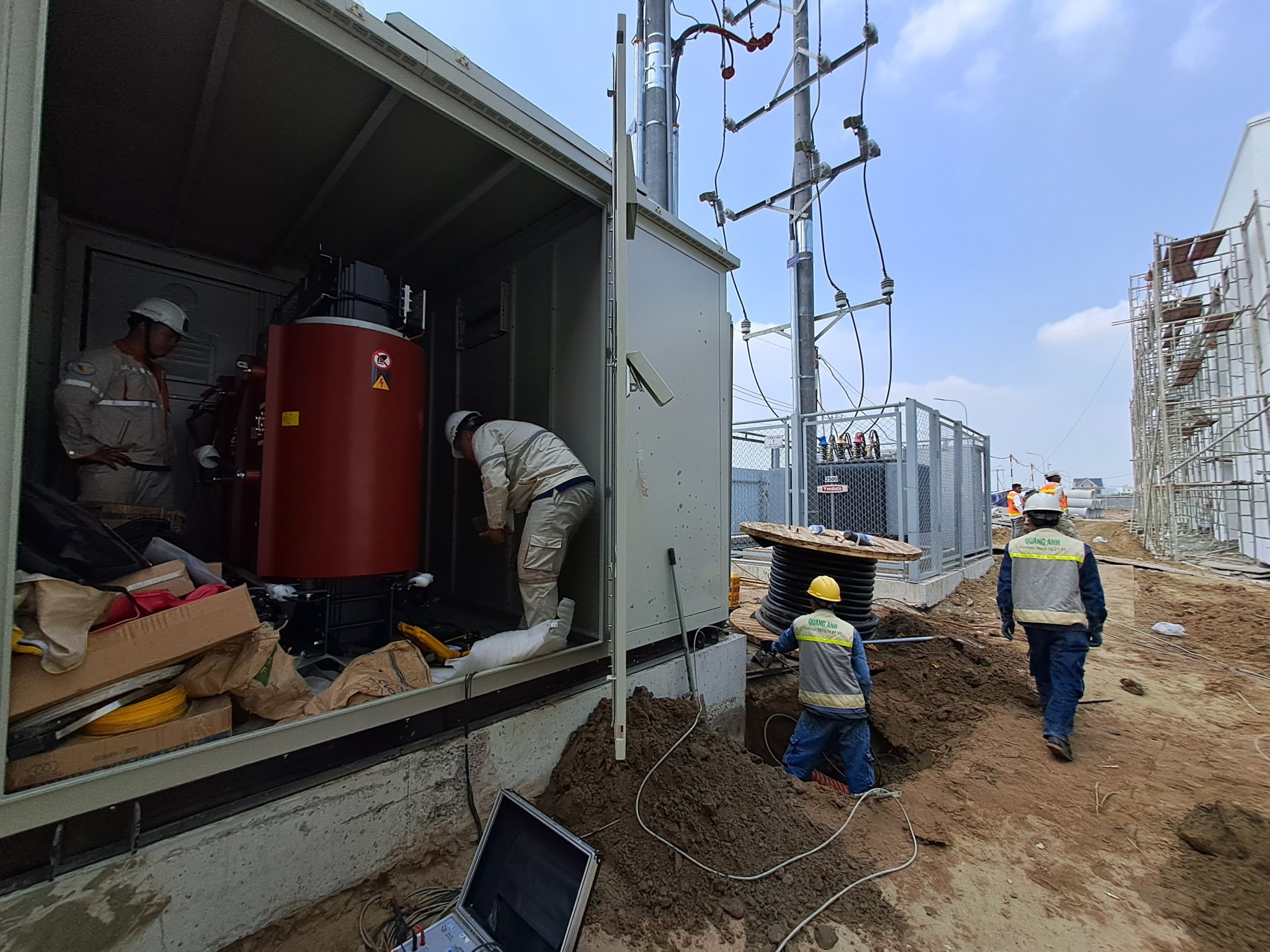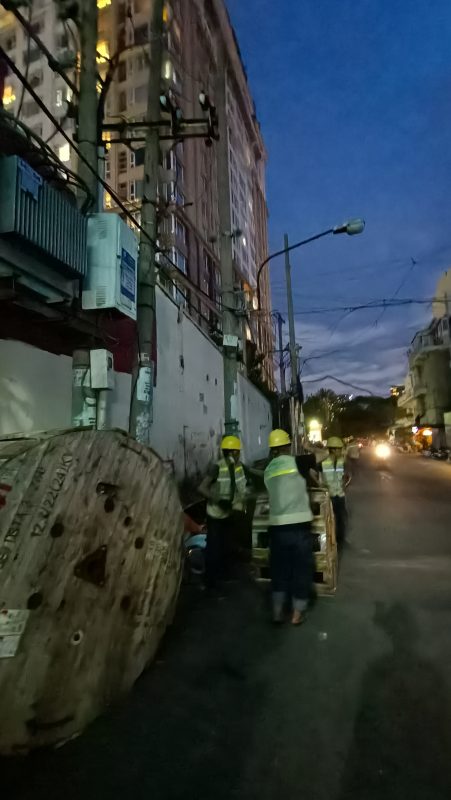The comprehensive HVAC solutions for factories include an integrated system of air conditioning units, ventilation fans, and air filters, meeting the demands of a safe and energy-efficient working environment.
Components and Functions of HVAC Systems in Factories
Comprehensive HVAC systems in factories feature air conditioners aimed at effective temperature regulation. Ventilation fans supply fresh air and expel polluted air, maintaining air quality. Additionally, high-performance air filters like HEPA can eliminate up to 99.97% of small particles, ensuring clean air in production environments.
Components of HVAC Systems
The HVAC systems in factories comprise advanced technical devices designed to enhance working conditions and meet production requirements. Specific components include:
- Fans: Essential for circulating air inside and outside factories, ensuring effective air exchange and stable temperatures. Fans move air through ducts and mixing chambers for optimal air circulation.
- Air Ducts: This system delivers temperature-controlled air to various factory areas, ensuring efficient climate control.
- Mixing Chambers: These areas blend indoor air with outdoor air to stabilize quality and temperature.
- Air Filters: High-quality filters like HEPA membranes remove small dust particles, keeping the air clean.
- Heat Exchangers: Comprising hot and cold coils, these participate in heating or cooling air circulation, achieving the desired air conditions.
- Boilers, Heaters, Heat Pumps: These components provide heat for the factory’s entire heating system, using versatile fuels like electricity, coal, and gas.
- Compressors and Condensers: Vital for circulating and maintaining the temperature of refrigerants.
- Water Pumps: Necessary for circulating water through heat exchange systems, ensuring efficient cooling or heating in large areas.
- Automatic Control Systems: Automate and optimize HVAC system operations, maximizing energy savings.
Functions of HVAC Systems
More than just complex components, HVAC systems perform crucial specialized functions:
- Temperature Control: The HVAC system maintains suitable temperatures for work environments and material preservation, thus boosting production efficiency.
- Assuring Air Quality: Continuous dust, bacteria filtration, and humidity control create a healthy working environment.
- Industrial Ventilation: The system facilitates fresh air circulation from outside, preventing mold and pollution in production areas.
- Energy Efficiency: Through automation, the HVAC system reduces energy consumption and optimizes long-term operating costs.
Modern HVAC Systems in factories don’t just support air conditioning; they integrate other functions like Air Quality Control and Heat Exchange to minimize energy consumption and meet stringent environmental standards.

Advanced Technology and Optimal HVAC System Management
Modern HVAC solutions use ULPA filters for clean rooms and smart management systems to monitor temperature and humidity. Temperature sensors and automated controllers optimize environmental conditions and save energy. Smart building management systems play a key role in maintaining high efficiency and sustainability.
Optimal HVAC systems are becoming a breakthrough field, thanks to the integration of smart technology and IoT. Smart HVAC systems enable remote management via phones or computers, optimizing energy efficiency and reducing operational costs. Using sensors to detect human presence, the system automatically adjusts temperature to fit the space conditions and number of people in the room.
An important aspect of optimal HVAC systems is improving indoor air quality. Technologies such as HEPA filters and UV-C lamps are widely applied to enhance air quality, ensuring health and safety for people in work and living spaces.
Environmentally friendly refrigerant solutions are replacing hydrofluorocarbons (HFC), reducing negative environmental impacts. Meanwhile, noise reduction technology has also improved significantly, providing a quieter and more efficient user experience.
In the industrial HVAC sector, participating in exhibitions like Cleanfact Vietnam 2025 and RHVAC Vietnam 2025 is common. These events gather the latest products and technologies, allowing businesses to access advanced technical solutions.
Optimal HVAC system management requires the integration of IoT and sensors, collecting real-time operational data for management software to analyze and optimize. This not only improves energy efficiency but also reduces maintenance costs. Flexible adaptation to changing environmental conditions and usage needs is crucial for maintaining a clean and energy-saving environment.

Energy-Saving Solutions with HVAC Systems
HVAC systems use heat recovery technology to save energy and DC motor fans with low electricity consumption. Fireproof materials ensure safety and reduce CO₂ emissions, contributing to environmental protection and sustainable development.
In the modern context, energy-saving solutions for HVAC systems are not only necessary but also provide clear economic benefits, especially when applying HVAC energy saving solutions. Regular maintenance and system inspections help maintain high HVAC efficiency by reducing energy waste caused by dirt and damage. Using smart control systems and programmable thermostats optimizes temperature adjustment according to actual demand, minimizing wasted energy from unnecessary operations.
One advanced solution is applying inverter technology to pump motors, fans, and cold compressors. This technology allows speed adjustment to match load demand, significantly reducing electricity consumption compared to full capacity operation. The VRF system automatically transfers refrigerant to necessary areas, saving energy by handling uneven temperatures.
Additionally, reducing outdoor air and increasing the recycling rate of indoor air reduces cooling and heating energy loads. This allows for smaller HVAC system sizing, reducing investment and operational costs. Technology like PlasmaSOFT combined with Plasma Air exemplifies solutions that can cut outdoor air by up to 75%, saving over 30% of electricity while maintaining air quality.
Furthermore, using ceiling fans to aid air circulation helps maintain comfort even when air conditioning is set higher, saving energy during cooling. Preserving airflow within the system is a critical factor, ensuring vents and ducts remain clear.
Knowledge and awareness of HVAC system principles and operations play a crucial role in energy savings. Managers or technicians who grasp these principles can implement effective adjustments and maintenance. Ultimately, rational building structure design and renovation help reduce heat loss, lessen cooling/heating load, and thus decrease overall energy demand for HVAC systems.

Comprehensive HVAC solutions for factories offer numerous technical and cost-optimization benefits while being environmentally friendly. The integrated modern technology of HVAC systems not only ensures a safe and comfortable working environment but also significantly conserves energy.
Contact QuangAnhcons today at +84 9 1975 8191 for detailed consultation on comprehensive HVAC solutions for your factory.
QuangAnhcons provides comprehensive HVAC solutions for factories, including design consulting, installation, maintenance, and system upgrades, meeting modern standards for safety and energy efficiency.


Related Posts
Factory Electrical Systems: Comprehensive Design and Implementation Guide
Discover the detailed and safe process of factory electrical systems design and implementation. [...]
Oct
Blueprints Required for Factory Construction Permits
Discover the necessary blueprints in factory construction permit applications, from floor plans to electrical and [...]
Oct
What Are the Requirements for a Factory Construction Permit? A Comprehensive Guide
Explore the documentation and steps needed to secure a factory construction permit for streamlined project [...]
Oct
Factory Construction Permit Procedures in Vietnam: Essential Guidelines and Documents
Learn the procedures for securing a factory construction permit in Vietnam, focusing on document preparation [...]
Oct
Key Steps in the Factory Construction Process
Discover the essential steps and requirements for building factories. [...]
Oct
Comprehensive Electrical Substation Solutions by Quanganhcons
Discover the cutting-edge electrical substation solutions offered by Quanganhcons for industrial applications. [...]
Oct
Investment Costs for a 1MWp Solar Power System and Influencing Factors
Explore the investment costs for a 1MWp solar power system in Vietnam and the influencing [...]
Sep
QuangAnhcons: Elevating Wind Energy Solutions
Explore QuangAnhcons' leadership in wind energy and renewable solutions in Vietnam. [...]
Sep
Electrical Contractor Strategies at Becamex Industrial Park
Discover the strategic advancements and partnerships of the electrical contractor at Becamex Industrial Park. [...]
Sep
Investment Insights for 1MW Wind Energy in Vietnam: Costs and Opportunities
Discover the detailed analysis of costs and opportunities for investing in 1MW wind energy projects [...]
Sep
Advanced Electrical Installation Solutions by QuangAnhcons
Explore advanced electrical installation solutions and modern technology with QuangAnhcons. [...]
Sep
Enhancing Industrial Electrical Services with Quanganhcons
Discover Quanganhcons' expertise in industrial electrical services, offering efficient and sustainable power systems. [...]
Sep
Comprehensive MEP Solutions by QuangAnhcons: From Design to Maintenance Excellence
Discover optimal MEP solutions with QuangAnhcons, dedicated to excellence from design through maintenance. [...]
Sep
Comprehensive Electromechanical Contracting Solutions by QuangAnhcons
Explore QuangAnhcons' comprehensive services for efficient and safe energy system solutions. [...]
Sep
QuangAnhcons: Empowering Industrial Energy Solutions
Discover how QuangAnhcons delivers optimal industrial EPC solutions. [...]
Sep
Effective Industrial Construction Management and Execution
Optimize your industrial projects from design to execution with our contractor services. [...]
Sep
QuangAnhcons: Pioneers in M&E and Renewable Energy Solutions
Discover QuangAnhcons' innovative M&E services and renewable energy solutions. [...]
Sep
QuangAnhcons: Expertise and Outstanding Services in the Electrical Sector
Discover the unmatched expertise and services of QuangAnhcons, setting superior standards in the electrical contracting [...]
Sep
QuangAnhcons: Innovation and Precision in Industrial Electrical Contracting
Discover QuangAnhcons, a top contractor offering superior electro-mechanical solutions. [...]
Aug
Expert Solutions for 2x2500kVA Substation Projects with QuangAnhCons
Explore QuangAnhCons, a forefront entity in designing and constructing large industrial substations. [...]
Aug